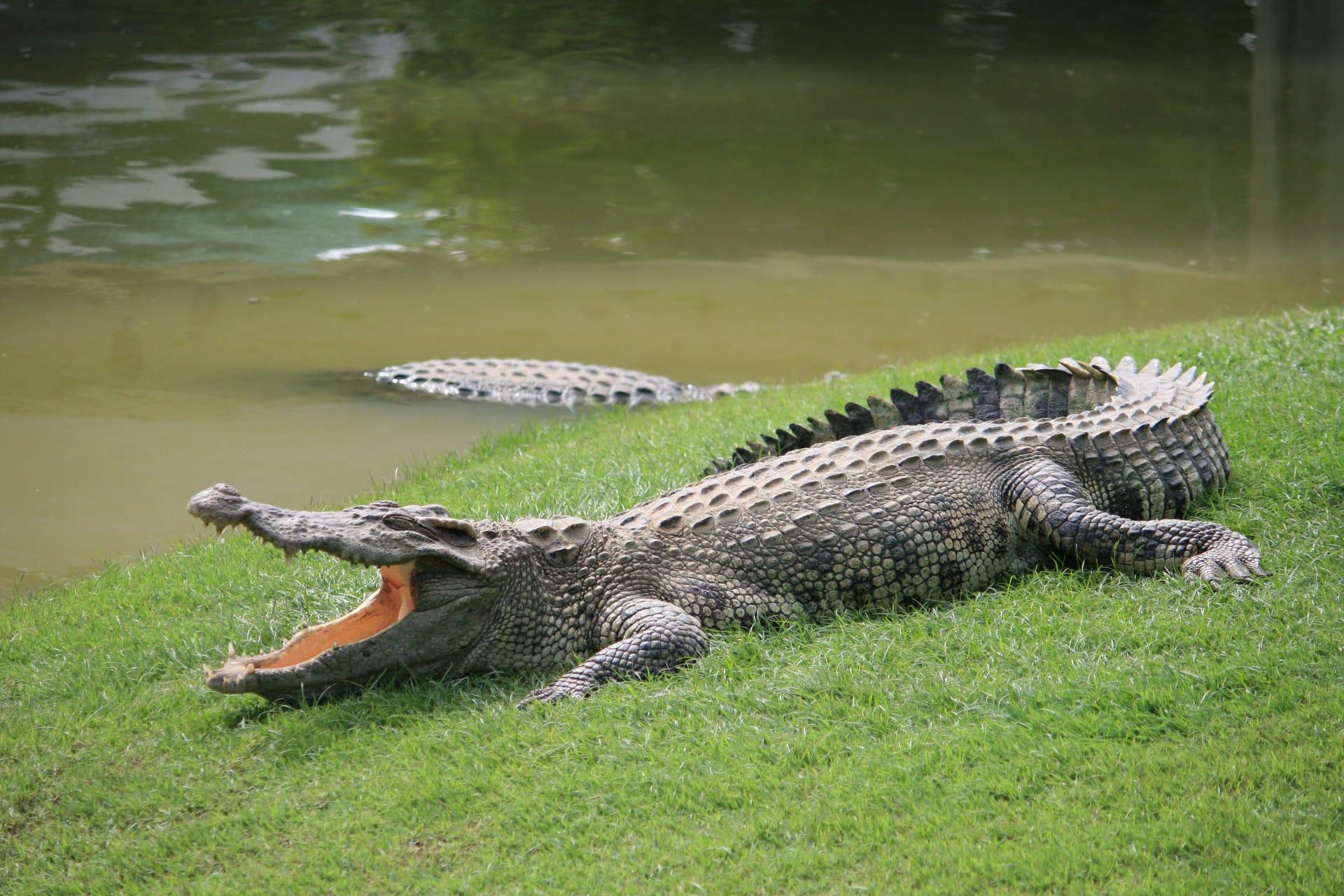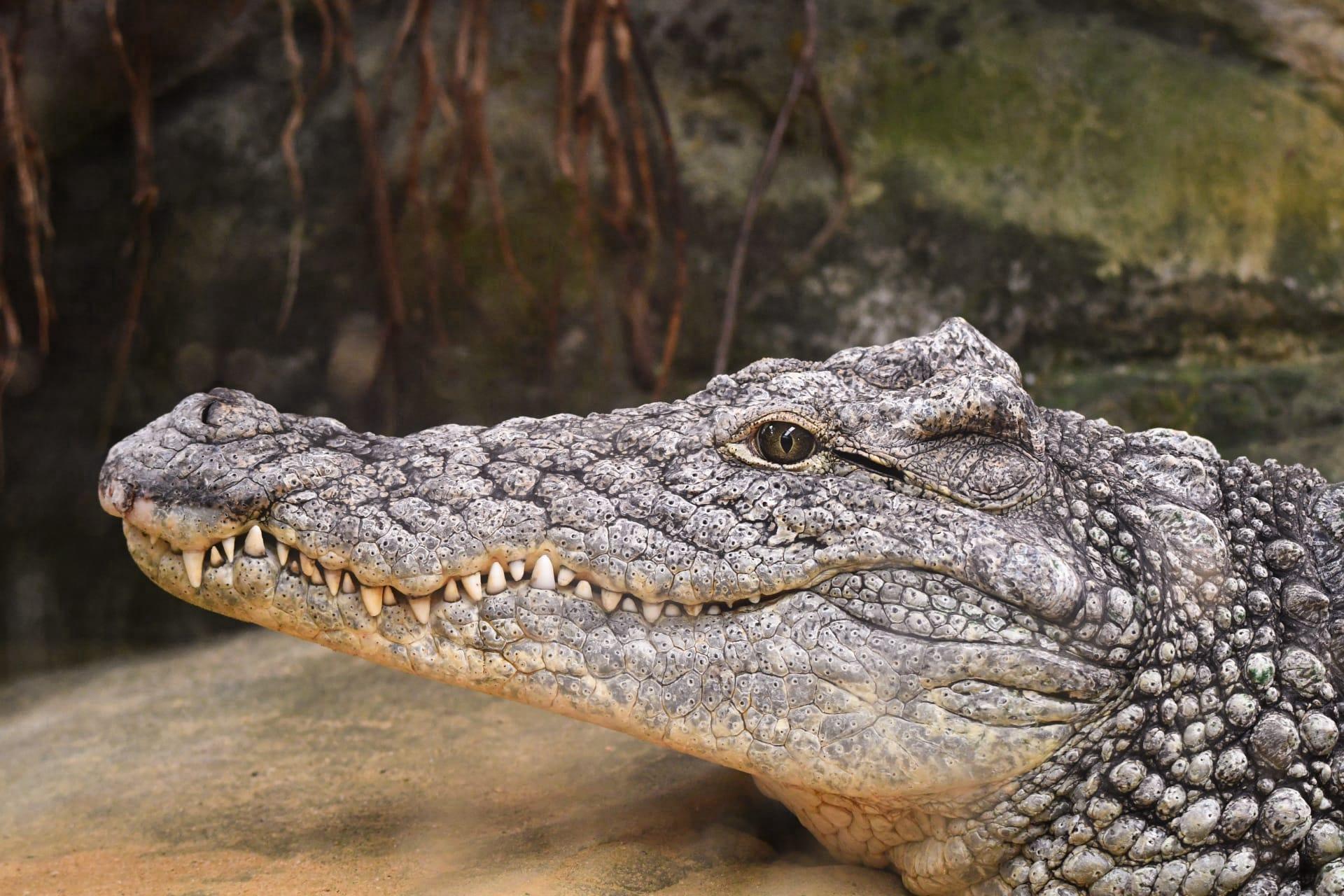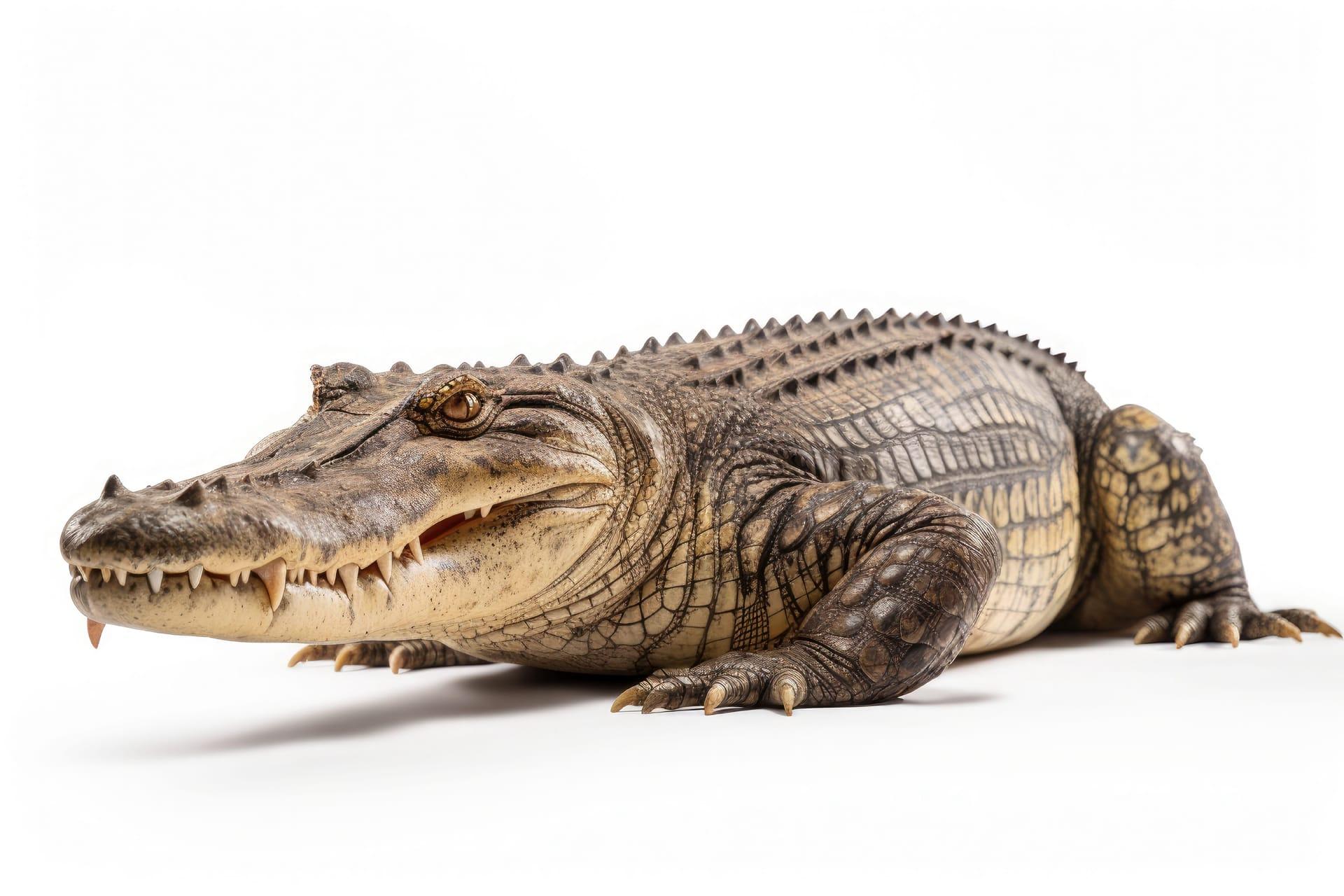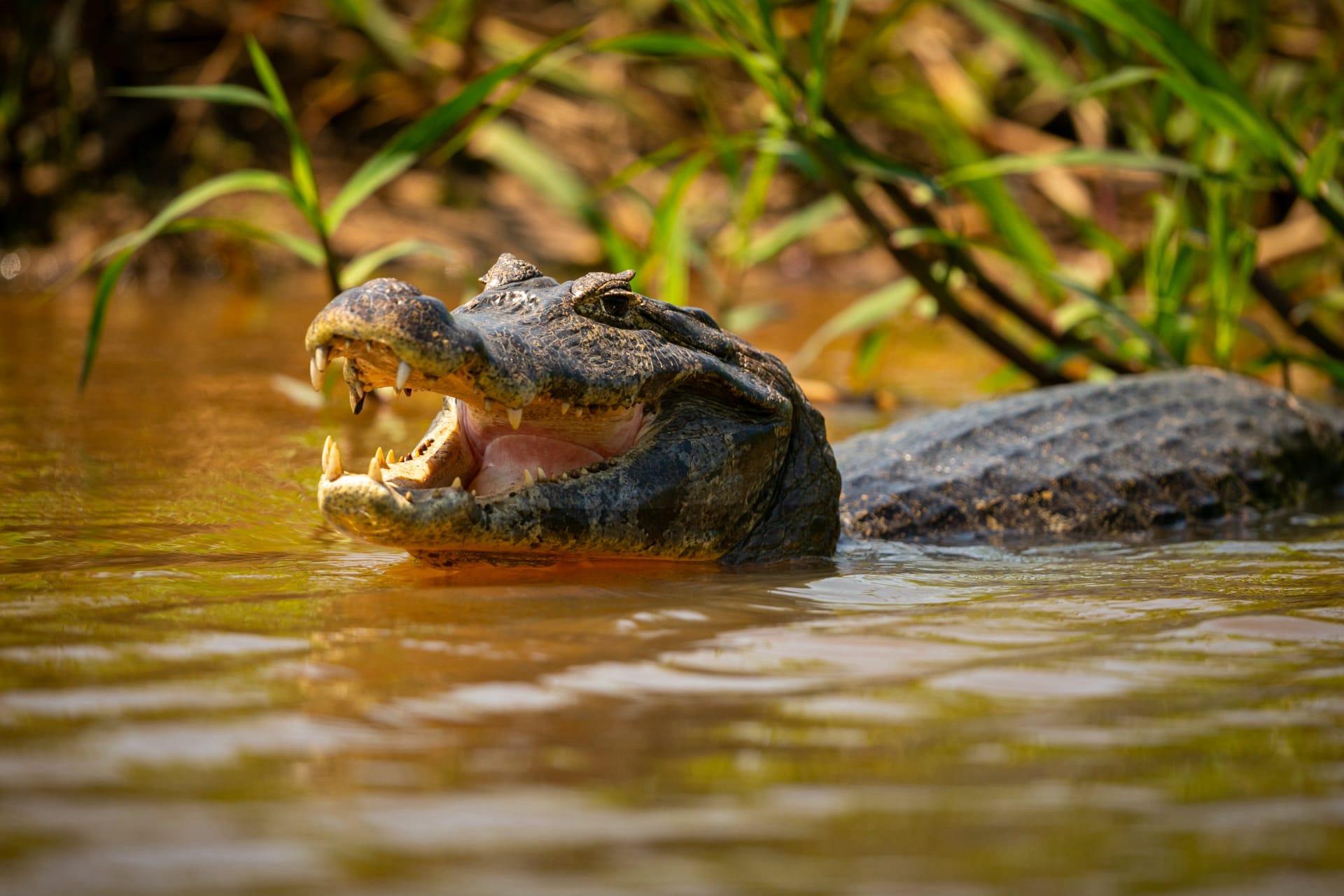American Alligator Characteristics
- Home /
- Mini Encyclopedia /
- Animal /
- American Alligator Characteristics
1
The American Alligator, an awe-inspiring reptile, is a testament to nature's architectural genius. Adult males can grow up to an impressive 11 to 15 feet in length, tipping the scales at 450 to 500 kilograms. Females are slightly smaller, usually measuring around 8.2 feet. These colossal creatures enjoy a hearty lifespan, typically ranging from 35 to 50 years in the wild, though some in captivity have celebrated their 70th birthday. Their rugged, armored skin, a tapestry of scales and osteoderms, not only adds to their intimidating appearance but also provides vital protection.
One of the American Alligator's most remarkable organs is its integumentary sensory organ (ISO), found in the skin of its jaws. These small, black spots bristle with sensitivity, capable of detecting the slightest disturbances in the water. This advanced sensory system allows the alligator to pinpoint the location of prey and navigate murky waters with incredible precision. It's a pivotal tool for their survival, especially during night hunting or in clouded environments, making them formidable and efficient predators.

2
Question: How can American Alligators survive in both fresh and saltwater environments?
Answer: American Alligators exhibit an extraordinary adaptability to varying aquatic habitats. Primarily residents of freshwater ecosystems like rivers, lakes, and swamps, they possess special glands in their tongues called lingual salt glands. These glands are crucial for osmoregulation, allowing the alligators to expel excess salt from their bodies. This unique adaptation enables them to venture into brackish water environments and occasionally into saltwater. However, they are not true saltwater dwellers like their relatives, the crocodiles, and prefer the serene freshwater bodies for long-term habitation.

3
The American Alligator's movement is a blend of grace and power. On land, they may seem cumbersome due to their hefty build, but they can sprint short distances at speeds up to 11 mph. In water, they truly excel. Utilizing their muscular tails, they can swim effortlessly at speeds of about 20 mph. This aquatic agility is crucial for hunting and evading threats.
In terms of hunting, the American Alligator is a master strategist. They are predominantly nocturnal hunters, relying on their keen eyesight and the aforementioned ISOs for detecting prey. Their diet is varied, including fish, birds, and mammals. Alligators use a technique called the "death roll" — a powerful and swift twisting motion — to subdue larger prey. This tactic, combined with their stealth and strength, makes them apex predators in their habitats.

4
American Alligators are indigenous to the southeastern United States, thriving in habitats like marshes, rivers, lakes, and swamps. They favor warm climates and are often found in Florida and Louisiana. These environments provide ample food and shelter, playing a crucial role in their lifecycle. Seasonal temperature changes can influence their behavior, with alligators becoming less active during colder periods.
Reproduction is a fascinating aspect of their life cycle. Mating season occurs in the spring, with females constructing nests made of vegetation. They lay 20 to 50 eggs, which they fiercely guard. The sex of the offspring is determined by the temperature of the nest: higher temperatures yield mostly males, while cooler temperatures produce females. Hatchlings are born about 65 days later, receiving parental care for up to two years, a rarity among reptiles.

5
Book: "Alligators of the North: The Story of the American Alligator" by H. R. Coursen. This engaging read, published in the USA in the 1990s, offers a deep dive into the history, behavior, and conservation of the American Alligator. Coursen, a renowned wildlife biologist, presents a blend of scientific research and captivating anecdotes, making the book accessible to both experts and lay readers interested in these majestic creatures.
Book: "The Secret Life of the American Alligator" by Dr. James D. Lazell. Published in the early 2000s in the USA, this book takes readers on a journey through the wetlands and waterways that are home to the American Alligator. Lazell, an esteemed herpetologist, combines years of field research with vivid storytelling to reveal the hidden world of these reptiles. The book delves into their social behavior, survival strategies, and the challenges they face in the modern world.